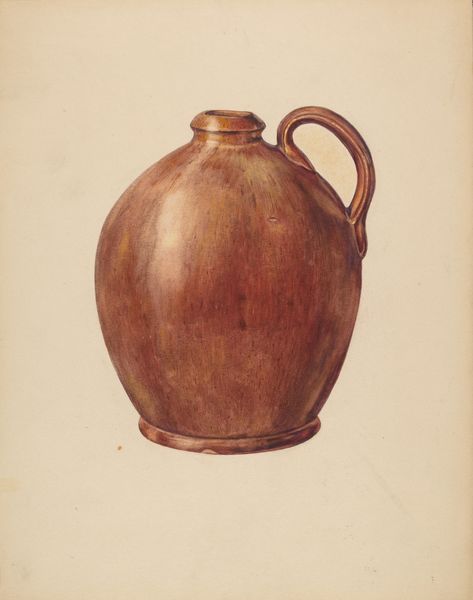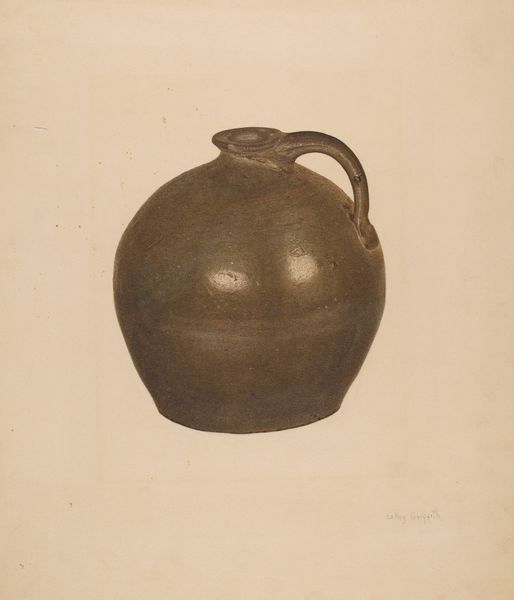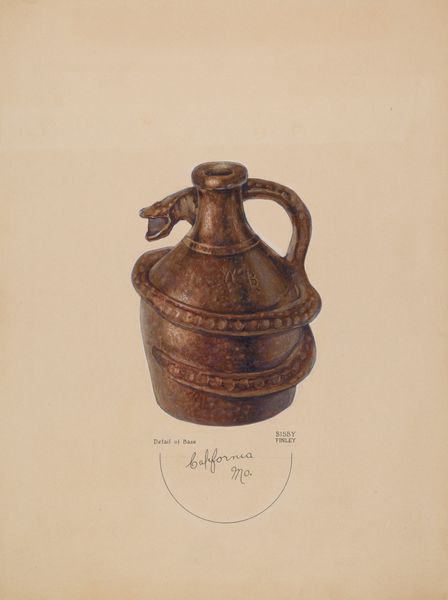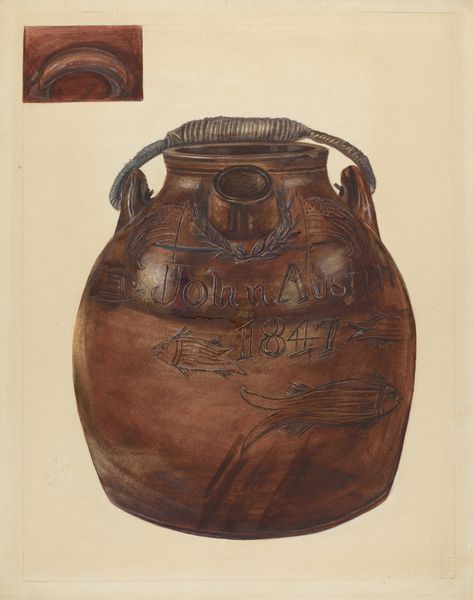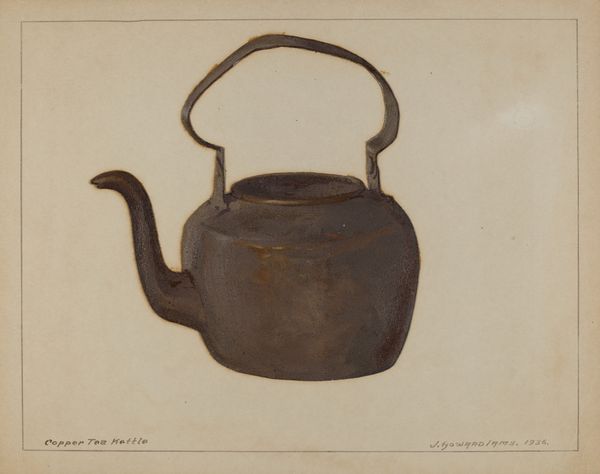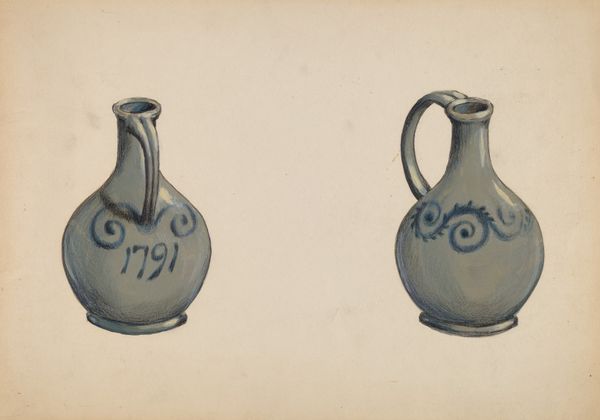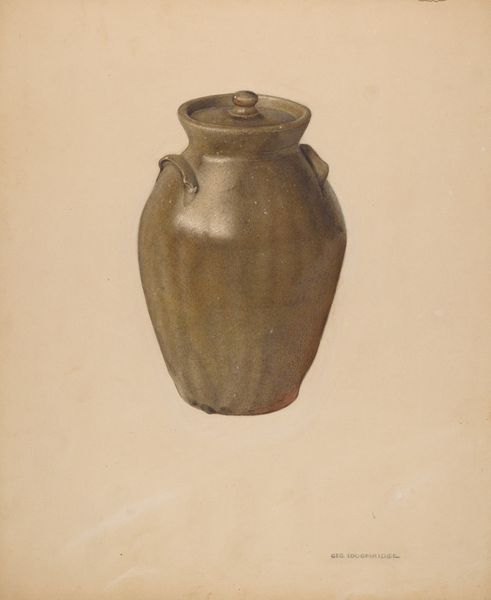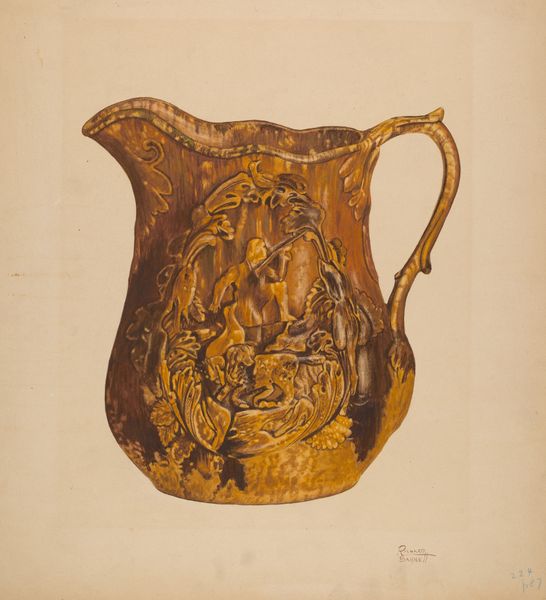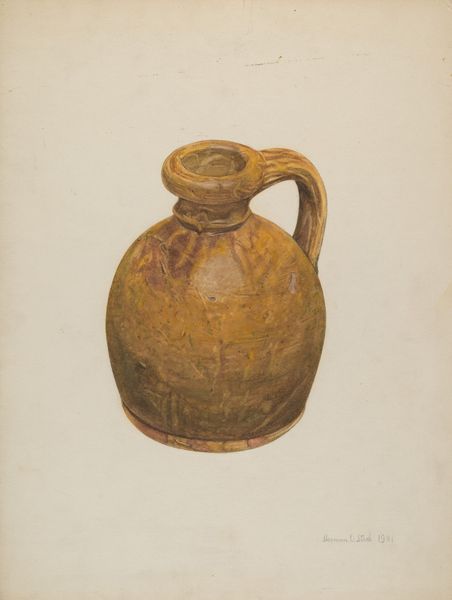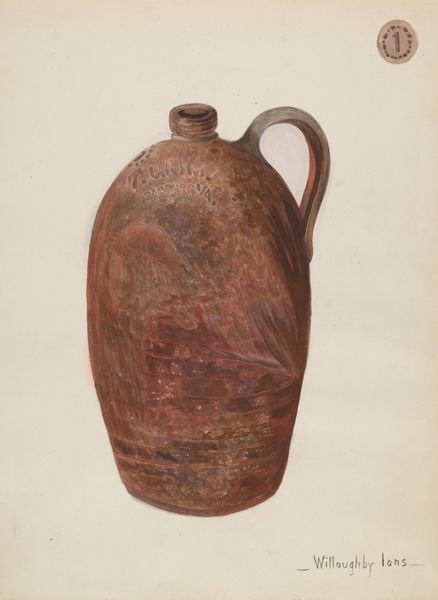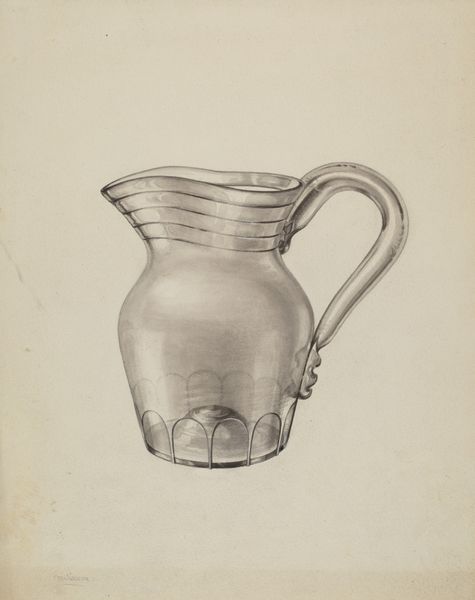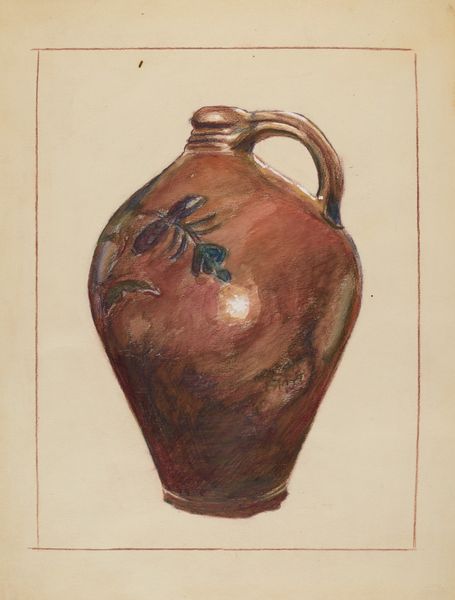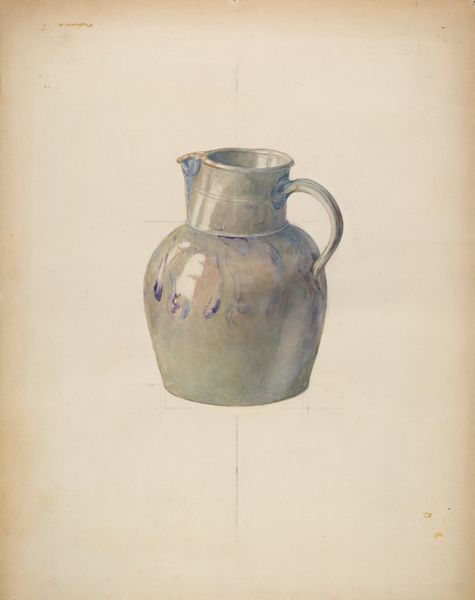
drawing, watercolor
#
drawing
#
charcoal drawing
#
figuration
#
watercolor
Dimensions: overall: 22.6 x 29.1 cm (8 7/8 x 11 7/16 in.) Original IAD Object: 7" High 3 3/4" Dia.(bot)
Copyright: National Gallery of Art: CC0 1.0
Curator: This is Frank Fumagalli’s “Grotesque Jug,” created around 1936. It combines drawing techniques using both watercolor and charcoal. What’s your immediate take on this, Editor? Editor: Well, it feels… heavy. There’s a weightiness to the image, a darkness too, despite the watercolor washes. Like peering into the soul of something old and knowing. Makes you wonder what sort of liquid you might find sloshing around inside. Curator: Absolutely. And think about that title, “Grotesque.” It's a loaded term, pointing both to an aesthetic and perhaps a social commentary. Fumagalli is intentionally using the caricature to... what, reflect anxieties? Critiques? Consider how folk pottery often straddled the line between utility and artistic expression. Editor: It feels defiant. The craftsmanship suggests skill, but the “grotesque” disrupts any easy sense of refinement. You can imagine it gracing a kitchen counter, simultaneously functional and a bit menacing. Are we elevating the everyday object to something more troubling? Is that his aim? Curator: Possibly. The roughness implied through the drawing also echoes the conditions under which such jugs were produced, possibly rural areas with less resources and less polish on the processes. We are given here a mass-produced, or reproducible, object represented through the supposedly unique artistic act of drawing. Where's the labor visible in the making, and what does that mean in context of Depression-era production? Editor: Good point, labor indeed! And it is definitely haunting to dwell on the hands that shaped that clay and those that consumed from it... But also it has a strange sense of humor. A dark, slightly unsettling grin that implies it knows more than it lets on. A playful monstrosity! Curator: I see that playful monstrosity definitely in the eyes. They tell a different story than the jug’s gaping mouth, no? Perhaps the eyes contain all the labor hidden behind a face with a simple purpose? All this really pushes us to look beyond the surface and ponder those contradictions. Editor: Exactly. It nudges us toward questioning our own comfortable assumptions. Thanks for lending a context! Curator: Indeed, a worthy object of reflection. Thanks to you as well.
Comments
No comments
Be the first to comment and join the conversation on the ultimate creative platform.

